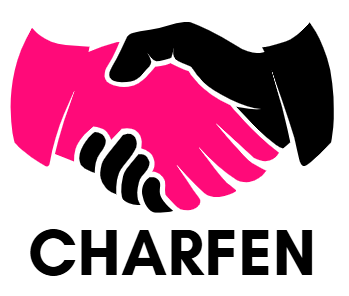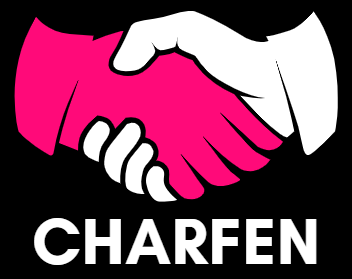Advertisement
Here’s a scenario you probably know all too well: You’ve put in the work, researching prospects for hours, meticulously building your email list, fine-tuning your outreach campaign. Then you send out 100 emails and crickets. Maybe one or two replies trickle in over the next week.
Frustrating, right? Here’s what’s really happening: the average cold email gets a 4.1% reply rate, which means 95% of your outreach efforts vanish into the digital void. This isn’t your product quality or bad timing, it’s how you construct your message.
The Foundation of Effective Cold Emailing: Strategic Planning Before Writing
Cold email outreach isn’t some spray-and-pray approach where you cross your fingers and hope something sticks. Consider this: email marketing delivers $36 for every dollar invested, but that impressive ROI only materializes when you put serious thought into your pre-writing strategy. Too many people dive headfirst into composing messages without considering what actually makes their prospects tick.
The real magic? It happens long before your cursor hits that blank email screen. When you are drafting a cold email, success hinges on understanding your recipient’s world and presenting a compelling reason why they should engage with you. Companies have centered their entire business around sophisticated personalization tools because they grasp this core principle, nobody responds to cookie-cutter messages anymore.
Understanding Your Target Audience Psychology
Every email that actually gets a response starts with thorough prospect research. You simply can’t write messages that resonate without knowing what challenges keep your audience up at night. This means going beyond surface-level details,digging into their LinkedIn activity, studying recent company press releases, and identifying the industry pressures they’re facing.
Successful outreach strategies always start with comprehensive buyer persona development. Sure, knowing someone’s job title matters, but what really counts is understanding their day-to-day pain points, what they’re measured on quarterly, and how they define professional success.
Pre-Draft Research That Transforms Response Rates
Here’s what separates the pros from the amateurs: spending 10-15 minutes researching each individual prospect before writing a single word. Look at their recent social posts, company announcements, and industry developments affecting their sector. This intelligence becomes your personalization ammunition.
Top-performing prospectors cast a wide research net. They’re not satisfied with basic company demographics, they’re hunting for trigger events, celebrating recent wins, and pinpointing specific pain points their solution can address.
Crafting High-Converting Cold Email Architecture
With your research complete, it’s time to build your message using proven structural elements. Effective cold emailing follows specific design principles that shepherd readers through a compelling narrative arc.
Subject Line Mastery: The Gateway to Engagement
Your subject line makes or breaks everything that follows. Forget trying to be clever, focus on delivering genuine value. The most effective subject lines spark curiosity while telegraphing the benefit waiting inside.
Experiment with different approaches for your specific audience. Some people respond to direct questions, others prefer provocative statements. Monitor your open rates closely and pivot based on what you discover.
Opening Lines That Command Attention
Generic salutations are engagement killers. Lead with something specific about their organization or a recent milestone they’ve achieved. This immediately demonstrates you’ve invested time in understanding their situation rather than blasting out identical messages.
Mention recent company developments, reference their LinkedIn content, or acknowledge industry shifts impacting their business. This strategy instantly differentiates your outreach from the mountain of generic emails cluttering their inbox.
Body Content Structure for Maximum Impact
Center your entire message around one crystal-clear value proposition. Personalized cold emails crush generic ones, we’re talking 6x higher response rates when you reference something specific about the prospect’s company, business, recent achievements, or industry challenges.
Organize your content around their problems, not your product features. Start with empathy, transition to your solution, and conclude with a concrete next step.
Advanced Drafting Cold Emails Techniques for Modern Outreach
Today’s draft cold emails landscape requires more sophisticated approaches,you need strategic technology integration combined with multi-channel coordination.
AI-Assisted Personalization at Scale
Modern tools are revolutionizing how we personalize messages without sacrificing authenticity. Today’s platforms provide dynamic content insertion and advanced personalization capabilities that maintain genuine feel while boosting efficiency. The trick is using technology to amplify human insights rather than replace them entirely.
Success lies in balancing automation with authentic personalization. Let AI handle data gathering and initial insights, but craft your actual message using human empathy and genuine understanding.
Multi-Channel Integration During Draft Phase
Your email shouldn’t operate in a vacuum. Plan how it coordinates with LinkedIn outreach, phone follow-ups, and social media engagement. This approach dramatically improves your breakthrough odds.
Think strategically about cross-channel timing. Maybe you’ll send a LinkedIn connection request before your email arrives, or schedule a phone follow-up 48 hours after your second message.
Successful Outreach Strategies: Beyond the Initial Draft
Email marketing techniques extend well beyond crafting that opening message. The most effective campaigns treat each email as one piece of an ongoing conversation thread.
Follow-Up Sequence Planning During Initial Drafting
Don’t just plan your opening email,map your entire conversation sequence. Each subsequent touchpoint should deliver fresh value while nurturing the relationship you’re building. This comprehensive planning during the initial drafting phase creates more cohesive campaign messaging.
Remember: most positive responses come from follow-ups, not initial outreach. Plan these touchpoints while crafting your first message to maintain consistent tone and messaging throughout.
Industry-Specific Drafting Variations
B2B executives communicate differently than small business owners. Enterprise decision-makers want strategic, high-level benefits, while individual contributors need practical, actionable solutions.
Tailor your approach, message length, and value proposition based on your target audience. What resonates in technology might completely fail in healthcare or financial services.
Final Thoughts on Cold Email Drafting Success
Here’s the bottom line: mastering the art of drafting a cold email is about forging authentic connections that generate real business outcomes. Companies achieving consistent success understand that every word carries weight, every detail influences perception, and every email represents an opportunity to build valuable relationships.
When you commit to strategic drafting, you’re not just sending messages,you’re creating pathways to meaningful conversations that can accelerate your business growth and establish enduring professional partnerships.
Common Questions About Cold Email Drafting
How long should each cold email take to draft?
Target 8-12 minutes per email, including research and personalization, to balance quality with operational scalability.
What’s the ideal length for maximum engagement?
Research indicates 50-125 words perform best, with 75-100 words showing peak response rates across most industries.
Should I use templates or write from scratch?
Use structured frameworks with 30-40% personalized content for each prospect,it’s the optimal balance between efficiency and authenticity.












